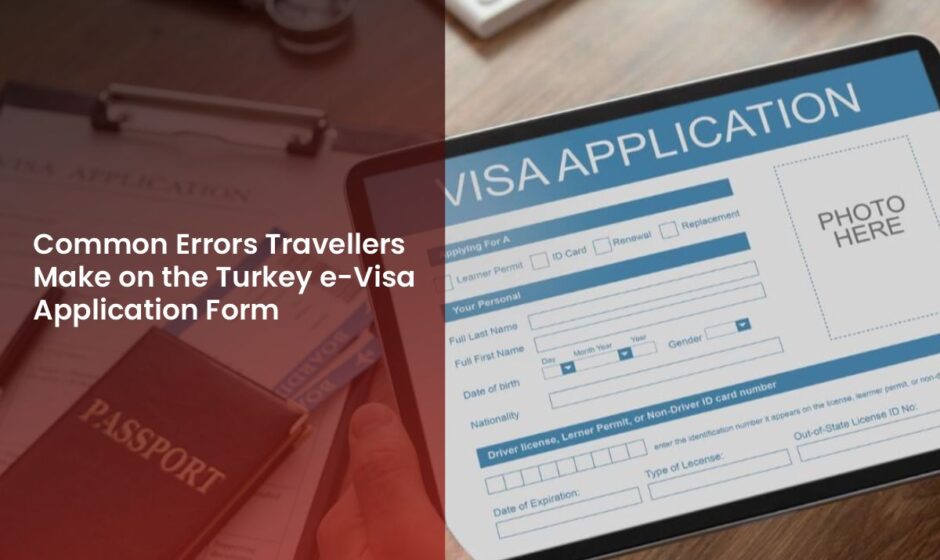Planning a trip to Turkey? The allure of Istanbul’s bustling bazaars, Cappadocia’s fairy chimneys, and the turquoise coasts of Antalya draws millions of visitors each year. But before you pack your bags, securing a Turkey e-Visa is often the first step for eligible travelers from around the globe. This electronic visa, introduced to streamline entry for tourists and business visitors, can be applied for online in minutes. However, what seems like a simple form can trip up even seasoned globetrotters, leading to delays, rejections, or last-minute scrambles at the airport.
Common errors on the turkey e-visa application form aren’t just minor oversights—they can result in denied boarding or entry, costing time and money. According to various travel advisory sites, thousands of applications are rejected annually due to avoidable mistakes like typos or incomplete information. In this article, we’ll dive into the most frequent pitfalls, from pre-application checks to final submission, helping you navigate the process smoothly. By understanding these, you’ll not only boost your approval chances but also start your Turkish adventure stress-free. Let’s explore how small details make a big difference.
Overlooking Eligibility: The First Hurdle Before Filling the Form
Before you even click “apply” on the official e-Visa portal, failing to confirm your eligibility is a blunder that wastes effort. Not every nationality qualifies for the online Turkey e-Visa; some require a traditional sticker visa from an embassy, while others enjoy visa-free entry for short stays. For instance, citizens from countries like the US, UK, or Australia can apply online, but those from certain African or Asian nations might need additional supporting visas, such as a valid Schengen or US visa.
Travelers often assume universal access, only to discover mid-application that their country isn’t listed or that they don’t meet conditional requirements. This leads to incomplete submissions or the need to start over with a different visa type. To avoid this, visit the official site and use the eligibility checker tool. Double-check if your passport type (ordinary, not diplomatic) and purpose of visit (tourism, business, or transit) align with e-Visa options. Skipping this step can turn excitement into frustration, especially if you’re booking flights without confirmation.
Misentering Passport Details: A Typo That Grounds Your Plans
One of the most prevalent errors is inputting incorrect passport information, which immigration systems flag immediately upon scanning. Your passport number, issue date, expiry date, and issuing country must match exactly—no room for even a single digit or letter swap. Forums are rife with stories of travelers mistyping the passport number’s sixth digit or confusing expiry with issue dates, leading to invalid visas.
Why does this happen? Rushed applications or copying from faded passport pages are often the culprit. Remember, the e-Visa is linked digitally to your passport, so discrepancies can result in boarding denials at your departure airport. Always cross-reference directly from your physical passport, not memory or old scans. If your passport expires soon, ensure it has at least 150-180 days’ validity from your arrival date in Turkey—another overlooked rule that invalidates applications.
Name and Date of Birth Mismatches: When Details Don’t Align
Closely tied to passport woes, errors in personal details like full name or date of birth are alarmingly common. The application demands your name exactly as it appears in your passport, including middle names, accents, or hyphens. A simple omission, like forgetting a hyphen in “Jean-Paul,” can render the visa useless.
Date of birth slip-ups often stem from format confusion—DD/MM/YYYY vs. MM/DD/YYYY—or plain typos. These mismatches trigger automatic rejections since they don’t sync with airline or border control databases. To sidestep this, type slowly, use copy-paste cautiously, and have someone else review. Real-life tales from travel communities highlight how such errors force re-applications and extra fees, turning a $20 process into a costly redo.
Ignoring Passport Validity Rules: Timing Is Everything
Many applicants breeze past the passport validity requirement, assuming their document is fine as long as it’s not expired. However, Turkey mandates that your passport remain valid for at least six months beyond your planned entry date. Submitting with a passport expiring in five months? Instant rejection.
This error is especially common among last-minute planners or those renewing passports mid-travel prep. It ties into broader eligibility but deserves spotlighting because it’s non-negotiable. Check your expiry early and renew if needed—delays in renewal can derail trips. Pro tip: Note that some airlines enforce this rule even stricter, so align with both Turkish and carrier policies for seamless travel.
Selecting the Wrong Visa Type: Mismatched Purposes Lead to Denials
The e-Visa caters to tourism, business meetings, or transit, but choosing incorrectly—say, selecting “tourism” for a conference—can lead to issues at the border. Some confuse it with work or student visas, which require embassy applications.
This mistake arises from not reading options carefully or misunderstanding trip intents. For conditional e-Visas, forgetting to indicate a supporting visa (like Schengen) compounds the error. Always match your selection to your itinerary; if in doubt, consult the FAQ on the official site. Getting this right ensures your visa covers your activities, preventing awkward explanations to officials.
Inputting Faulty Travel Dates: Arrival and Departure Mix-Ups
Entering inaccurate arrival or departure dates might seem minor, but it can invalidate your e-Visa if your actual travel doesn’t align. The visa activates on your stated arrival, with stays up to 90 days in 180 for most.
Common slips include guessing dates before booking flights or swapping arrival with departure fields. This leads to expired visas upon late arrivals or overstaying risks. Finalize your itinerary first, then apply—the e-Visa is valid for entry within 180 days of issuance. Accurate dates also help with multiple-entry options if you’re planning return visits.
Typos in Email Address: Missing Your Approval Notification
Your email is the lifeline for receiving the approved e-Visa PDF. A single misspelled character, like “gmial.com” instead of “gmail.com,” means you’ll never get it, assuming rejection when it’s actually approved.
This error is sneaky, often from auto-correct or haste. Without the email, you can’t print or show the visa at check-in. Verify your email twice and check spam folders post-submission. Some services offer SMS alerts, but email remains primary—test it by sending yourself a note during application.
Payment Processing Pitfalls: When Transactions Fail
The final step—payment—trips up many with card declines, incorrect details, or session timeouts. Using a card without international transaction enabled or entering the wrong CVV codes halts the process.
Issues like unstable internet or browser incompatibility exacerbate this. Prepare by confirming your card works for online foreign payments and use a stable connection. If it fails, don’t resubmit immediately—check for double charges. Fees vary by nationality, from $20-60, so accuracy saves money.
Forgetting Supporting Documents: Essential for Conditional Applicants
For nationalities requiring a supporting visa (e.g., valid US, UK, or Schengen), omitting details or entering wrong expiry dates is a frequent flaw. This isn’t needed for all, but ignoring it leads to rejections.
Scan and verify supporting visa details meticulously. This step ensures eligibility proof, smoothing entry.
Failing to Review Before Submission: The Last Line of Defense
Rushing to submit without a thorough review catches many errors too late. The form doesn’t always flag inconsistencies, leaving it to you.
Take a break, then revisit each field. Print a draft if possible. This habit prevents 90% of issues, per travel experts.
What to Do If You’ve Already Made a Mistake: Recovery Steps
Discovered an error post-approval? Don’t panic—you’ll need a new application and pay again, as amendments aren’t allowed. If rejected, identify the reason via email and reapply correctly.
Contact support via the portal for guidance, but act fast before travel.
Final Tips: Ensuring a Flawless Turkey e-Visa Application
To wrap up, apply early (at least 48 hours before travel), use the official Turkey e-visa site only, and gather all info beforehand. Enable cookies, use updated browsers, and keep records.
By dodging these common errors, you’ll join the ranks of hassle-free travelers exploring Turkey’s wonders. Safe journeys!



